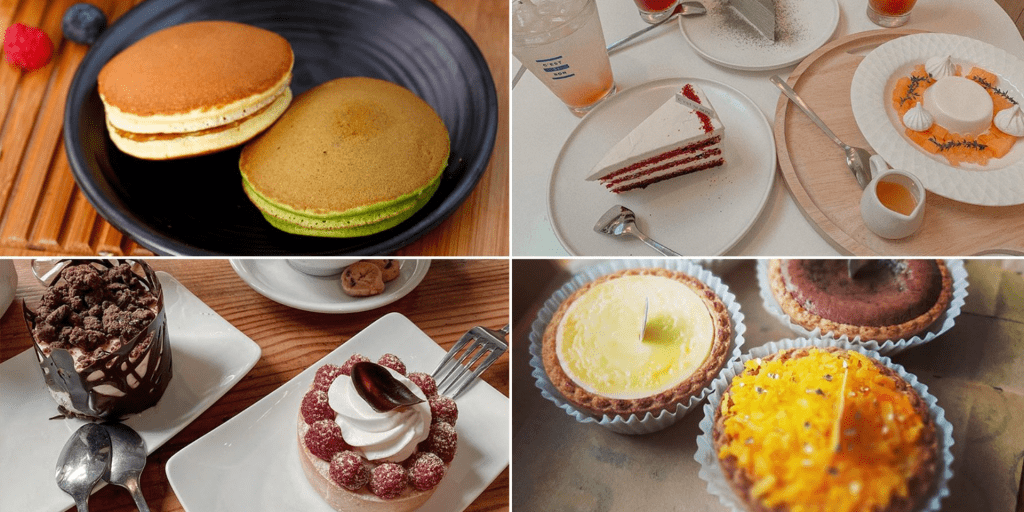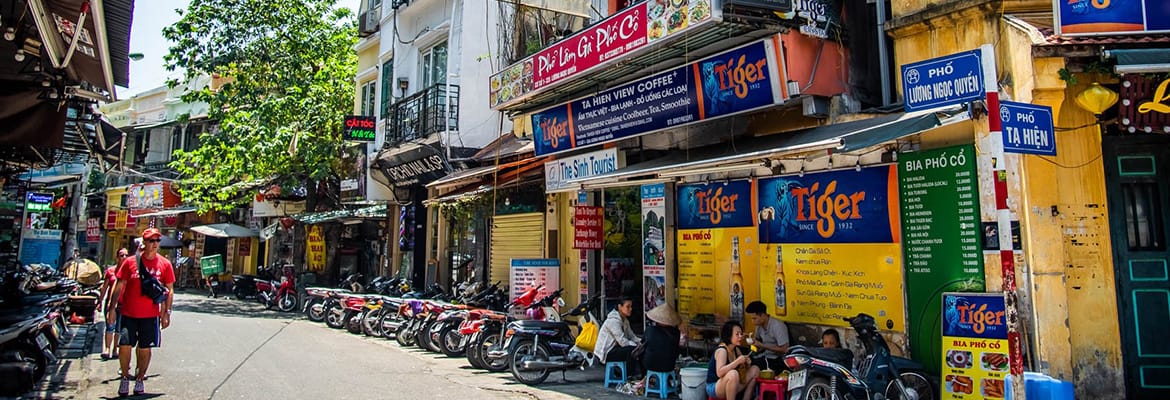I. Savoring Vietnam Introduction
1.1 A Taste of Vietnam
Prepare for a delightful tour across Vietnam’s dynamic and diverse gastronomic environment. From the busy streets of Hanoi to the magnificent dining experiences of Ho Chi Minh City, we’ll examine the flavors, methods, and cultural importance of Vietnamese food in this article.
Join us as we taste the essence of Vietnam, where every dish has a story to tell and every meal is a celebration of history and creativity.
1.2 The Culinary Diversity of the Regions
Vietnam’s culinary tapestry is woven with a diverse range of flavors and customs that differ by area. Each region, from the northern highlands to the southern deltas, has its own distinct ingredients, cooking methods, and characteristic meals.
This article sets the setting for our gastronomic adventure by showcasing the geographical variances that make Vietnamese food a delectable study of flavors, textures, and cultural history.

II. Street Food Wonders
2.1 Pho: The Soul of Vietnamese Street Food
Pho, a fragrant and savory noodle soup that encompasses the essence of Vietnamese cuisine, is frequently considered as the soul of Vietnamese street food.
This popular meal combines rice noodles, soft pieces of meat (typically beef or chicken), and a rich, fragrant broth flavored with spices such as star anise, cinnamon, and cloves.
With fresh herbs, bean sprouts, and a squeeze of lime on top, pho is a symphony of flavors that exemplifies the vivid and varied flavors found in Vietnamese street food culture. It’s more than a meal; it’s a sensory experience that has captivated the hearts and taste senses of people all over the world.

2.2 Banh Mi: A Culinary Fusion
Banh Mi, a culinary fusion created by combining Vietnamese and French culinary traditions, is a delectable tribute to the country’s history and culture. The crusty baguette, a relic of French colonial influence, is packed with a tempting blend of ingredients in this popular Vietnamese sandwich.
Succulent grilled or roasted meats like pig, chicken, or beef are paired with a mixture of fresh veggies like cucumber, cilantro, pickled daikon and carrots, and occasionally even a hint of hot chile in the traditional banh mi.
As a result, the French bread provides a sharp contrast to the supple and savory contents, resulting in a balanced combination of tastes and textures. Banh Mi illustrates how culinary traditions may coexist and grow to create something really unique that reflects Vietnam’s dynamic cultural history.
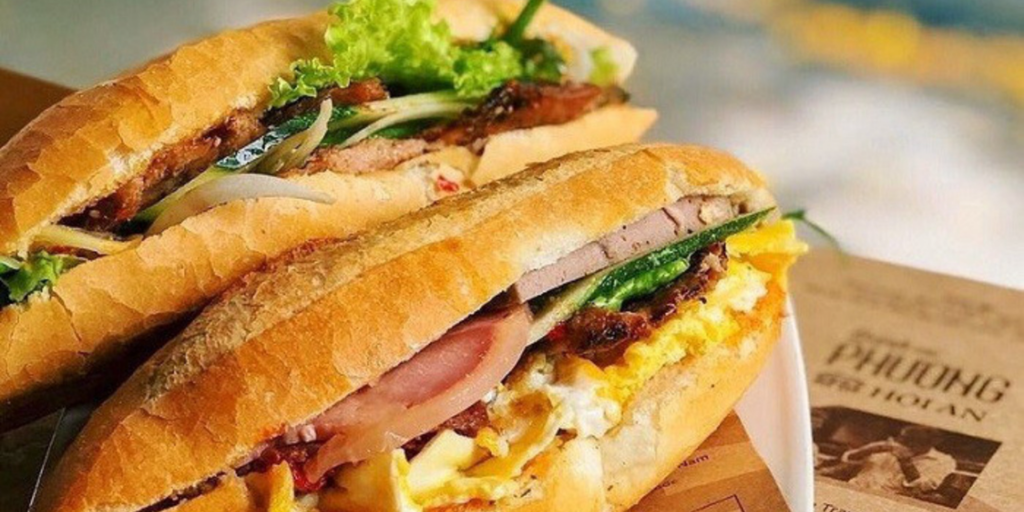
2.3 Bun Cha, Bun Thit Nuong, and More
Bun Cha, Bun Thit Nuong, and other Vietnamese meals offer a delectable variety of flavors and textures. Bun Cha is a Hanoi delicacy that consists of grilled pork served with rice vermicelli noodles and fresh herbs, whilst Bun Thit Nuong is a Southern Vietnamese dish that consists of grilled meat and noodles.
These dishes exhibit the mix of sweet, salty, and fresh components that distinguish Vietnamese cuisine, making them popular among both locals and worldwide food fans. Whether it’s the smokey flavors of Bun Cha or the brilliant hues of Bun Thit Nuong, these dishes are a delectable monument to Vietnam’s culinary variety.
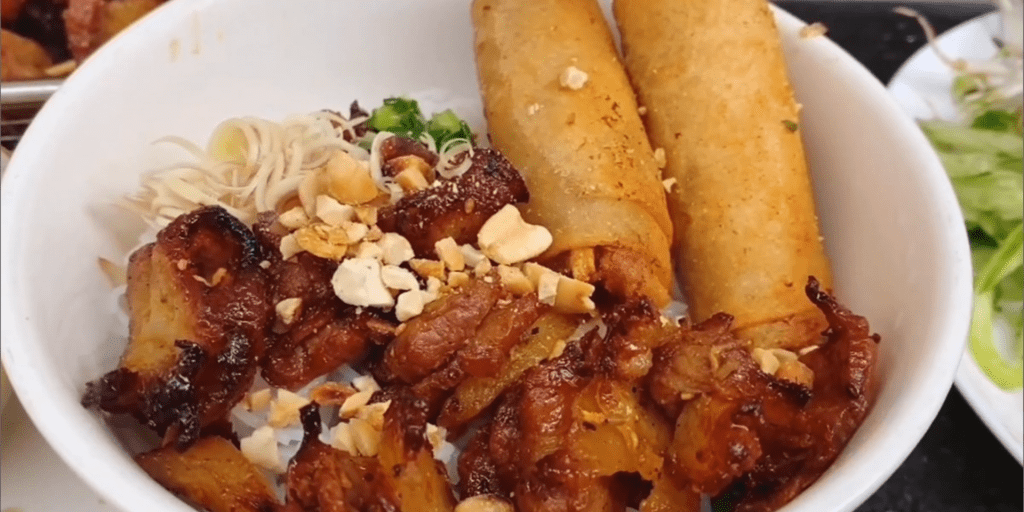
2.4 Street Market Delights
Vietnam’s street markets are a gastronomic treasure mine. These markets offer a sensory feast for food connoisseurs, from the busy streets of Hanoi to the colorful lanes of Ho Chi Minh City.
Every mouthful tells a narrative of Vietnamese culture and history, whether you’re relishing the savory richness of banh mi sandwiches, reveling in the delectable intricacy of pho noodle soup, or enjoying the fresh and fragrant spring rolls.
Exotic fruits, fragrant spices, and distinctive street delicacies like grilled skewers and crispy pancakes are also available at the markets. The street market delicacies of Vietnam are a gastronomic excursion that captures the heart and flavor of this enthralling Southeast Asian nation.
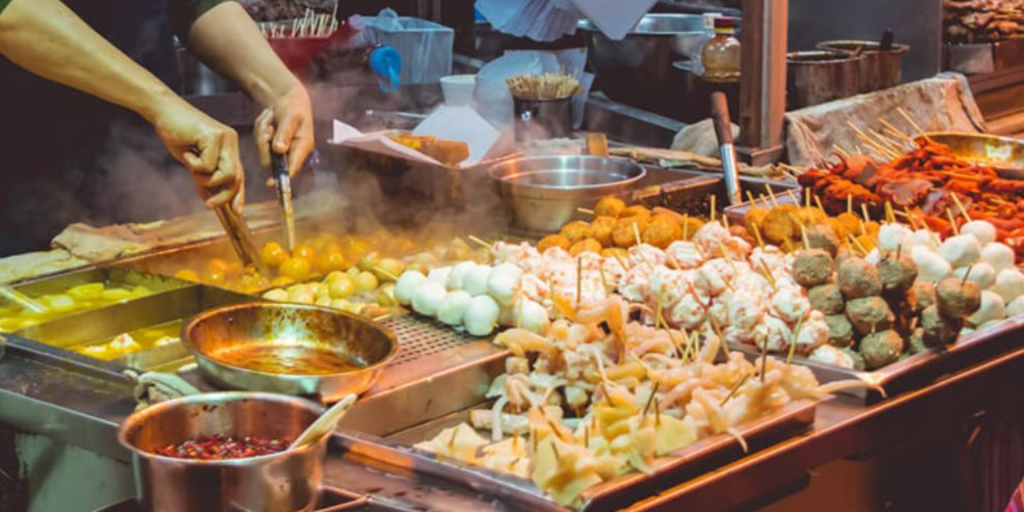
III. The Rise of Modern Vietnamese Cuisine
3.1 The Evolution of Vietnamese Fine Dining
The Rise of Modern Vietnamese Cuisine – Vietnamese fine dining has evolved in a spectacular way, reflecting the country’s dynamic gastronomic scene. Vietnam, long famed for its street cuisine and small cafes, has seen a shift in recent years.
Traditional recipes have been enhanced by a new generation of chefs and restaurateurs to provide unique and upmarket dining experiences.
These restaurants combine traditional flavors with contemporary presentation, serving meals that highlight the country’s rich culinary heritage in a sophisticated environment.
Vietnamese fine dining has become a blend of history and refinement, drawing both locals and foreign food enthusiasts looking to explore the depths of Vietnamese gastronomy, with an emphasis on fresh, local ingredients and rigorous attention to detail.
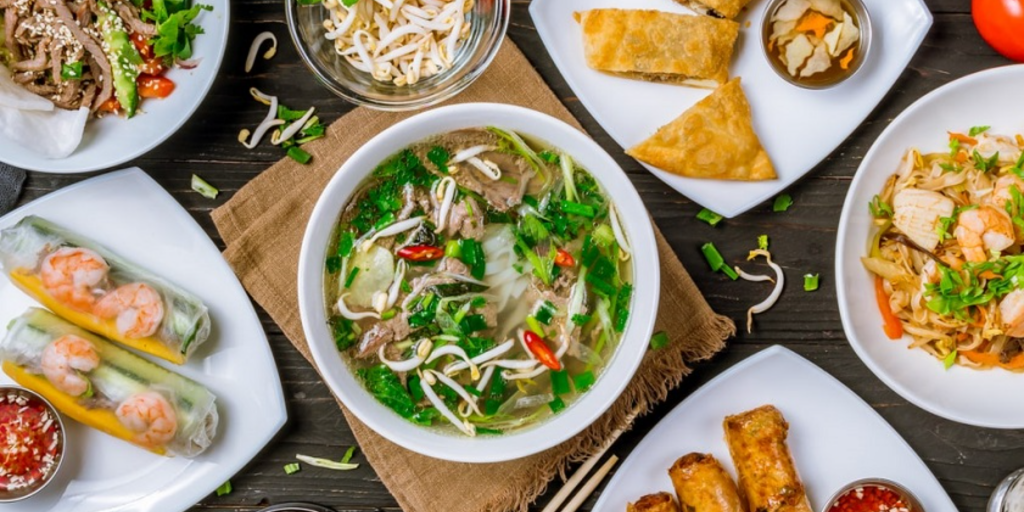
3.2 Fusion and Innovation in Vietnamese Restaurants
Vietnamese restaurants have embraced fusion and innovation, resulting in unique culinary experiences that push limits while remaining true to heritage. Chefs are fusing traditional Vietnamese flavors with modern influences to create meals that combine the ancient and the contemporary.
Whether it’s Vietnamese-inspired tacos, inventive banh mi versions, or reimaginings of classic noodle soups, these unique dishes cater to a wide range of preferences while broadening the boundaries of Vietnamese cuisine.
This dynamic progression demonstrates Vietnamese chefs’ versatility and ingenuity as they continue to fascinate customers with their creative interpretations to traditional meals.

3.3 Renowned Chefs and Their Creations
Renowned Chefs and Their Creations – Renowned chefs are culinary artists whose creations make an unforgettable impression on the gastronomic world.
From Michelin-starred chefs like Thomas Keller, who introduced the world to innovative dishes at The French Laundry, to Nobu Matsuhisa, whose signature dishes like black cod miso have become iconic, these chefs redefine what’s possible in the realm of food.
Their innovation, attention to detail, and drive to pushing culinary limits continue to inspire and thrill customers throughout the world, making them genuine culinary trailblazers.

IV. Coastal Delicacies
4.1 Seafood Extravaganza
The Vietnam Seafood Extravaganza is a gastronomic celebration of the country’s coastal wealth, with a delectable array of dishes highlighting the richness of its seas.
This fiesta displays the country’s love affair with seafood, with juicy grilled prawns, delicate steamed fish, and aromatic seafood stews. These meals are a seafood lover’s dream, thanks to the use of fresh herbs, zesty dipping sauces, and a blend of sweet, salty, and spicy tastes.
Vietnam’s seafood fiesta is a memorable gourmet experience that encapsulates the spirit of the country’s coastal culture, whether savored in crowded street markets or fancy restaurants overlooking the sea.
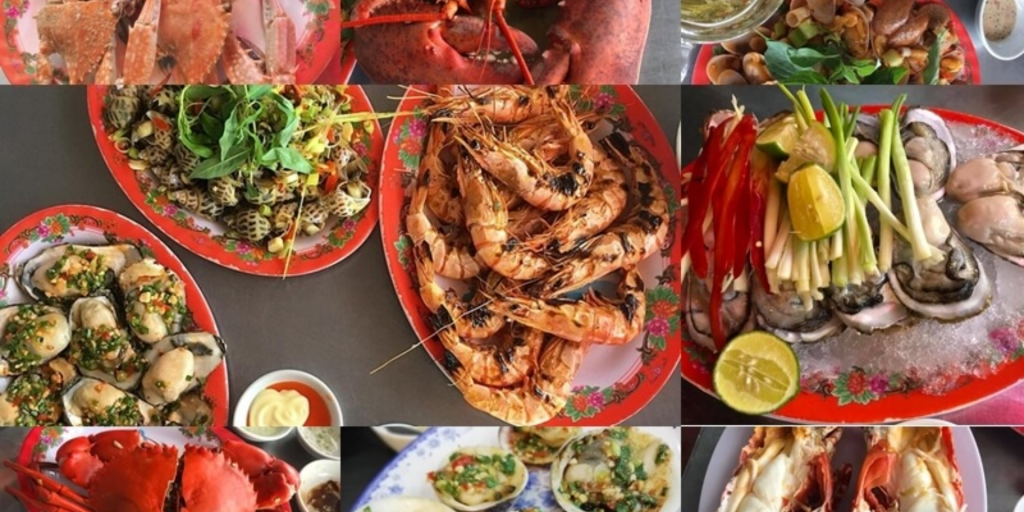
4.2 Cua Lot, Banh Xeo, and Other Coastal Favorites
Cua Lot, Banh Xeo, and other Vietnamese beach favorites provide a tantalizing sample of the country’s seashore delights. Cua Lot, or soft-shell crab, is appreciated for its sweet, supple flesh, which is commonly served in a variety of ways, from crispy fried to aromatic stir-fries.
Banh Xeo, a savory turmeric pancake loaded with shrimp, squid, and bean sprouts, on the other hand, is a coastal delicacy known for its crispy texture and vivid tastes. These meals, together with grilled seafood, fresh herbs, and spicy dipping sauces, exemplify Vietnam’s seaside appeal, where the abundance of the sea takes center stage.

4.3 The Influence of Coastal Cuisine on Vietnamese Culture
Coastal food has had a deep and long-lasting impact on Vietnamese culture. With over 3,000 kilometers of coastline, Vietnam’s coastal districts have evolved a rich and distinct culinary tradition. Seafood, ranging from fish to crabs and mollusks, is fundamental to Vietnamese coastal cuisine, serving as a major source of nourishment and livelihood for many people.
The tastes of the sea are expertly blended into classic recipes, giving them a distinct coastal flavor. Furthermore, seaside food represents the Vietnamese people’s profound connection to their natural surroundings, stressing sustainability and an appreciation for the ocean’s bounty.
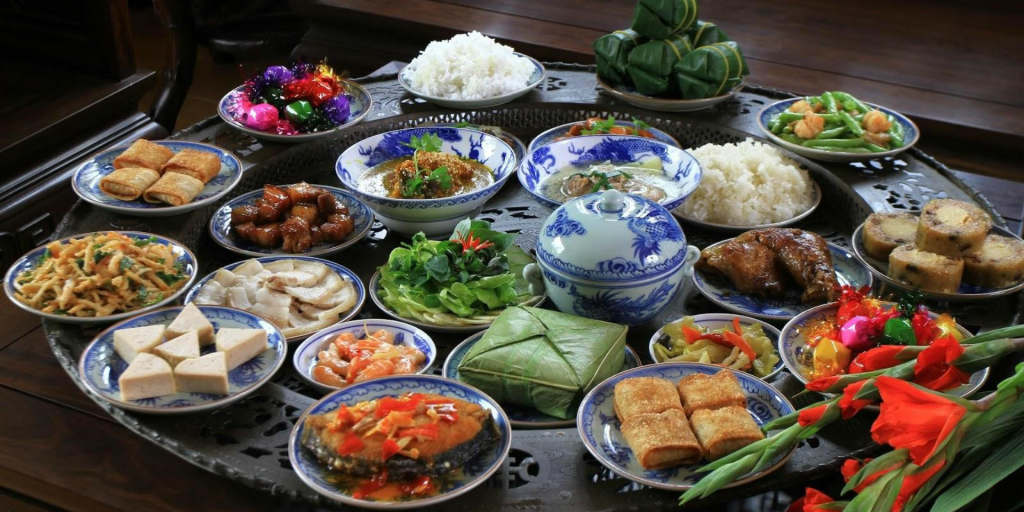
V. Exploring the Highlands
5.1 The Flavors of the Mountainous Regions
The tastes of Vietnam’s highland areas are enthralling journeys into a distinct aspect of the country’s gastronomic tapestry. The steep terrain and chilly environment affect the cuisine, resulting in robust, earthy, and fragrant foods.
Ingredients cultivated locally, such as wild mushrooms, bamboo shoots, and plants specific to these high-altitude locales, are frequently included. Rich broths, grilled meats, and foods that warm the soul define meals.
The tastes of Vietnam’s mountainous areas are a monument to the country’s unique gastronomic legacy, whether it’s a steaming bowl of Thang Co, a traditional Hmong stew, or the aromatic herb-infused dishes of the Tay and Thai ethnic groups.
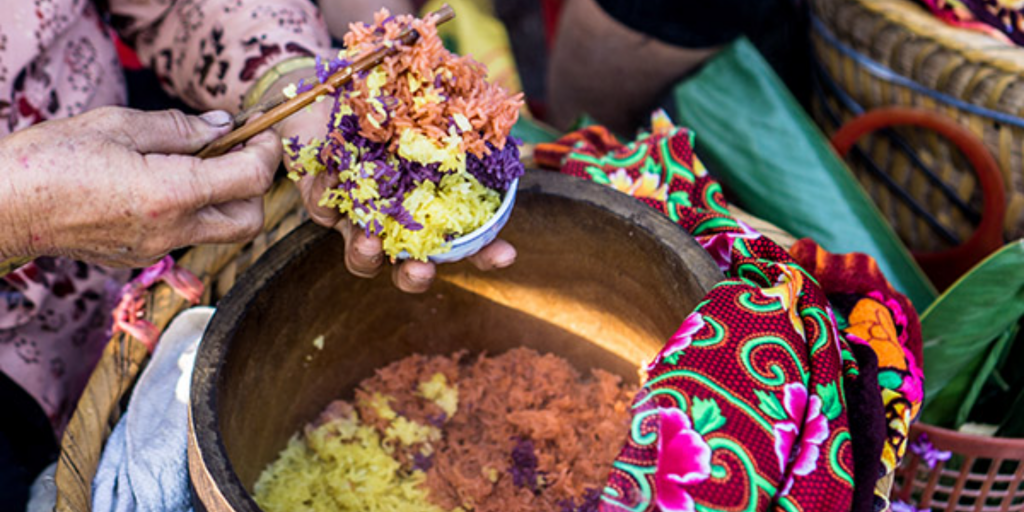
5.2 Unique Ingredients and Dishes
Vietnamese cuisine features a complex tapestry of distinct ingredients and dishes that attest to the country’s culinary variety. Vietnamese cuisines contain a diverse range of ingredients such as fresh herbs, fragrant spices, and regional delicacies, such as the pungent shrimp paste used in Banh Xeo and the unusual tastes of snakehead fish in Canh Chua.
The use of rice paper in spring rolls, or the unique umami of fish sauce in a variety of recipes, highlight the complexity of flavors and textures that distinguish Vietnamese food. This diversified gastronomic environment always surprises and delights, providing a new culinary journey with each meal.
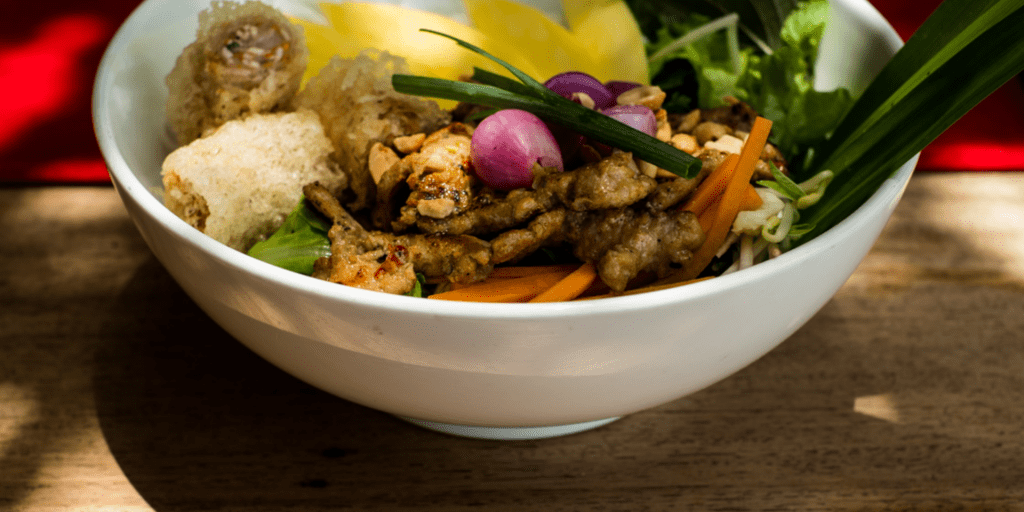
5.3 Ethnic Minority Culinary Traditions
The ethnic minority cuisine traditions of Vietnam are a rich tapestry of distinct tastes and culinary activities. Each ethnic group, like as the Hmong, Tay, and Khmer, contributes to the country’s rich culinary scene with their own individual recipes and ingredients.
From the robust cuisines of the H’mong highlanders, which include ingredients like as black cardamom and foraged greens, to the fragrant curries of the Cham people, these traditions illustrate a close relationship between culture, location, and food.
These culinary traditions not only give a flavor of Vietnam’s rich cultural legacy, but also illustrate the country’s incredible gastronomic variety.
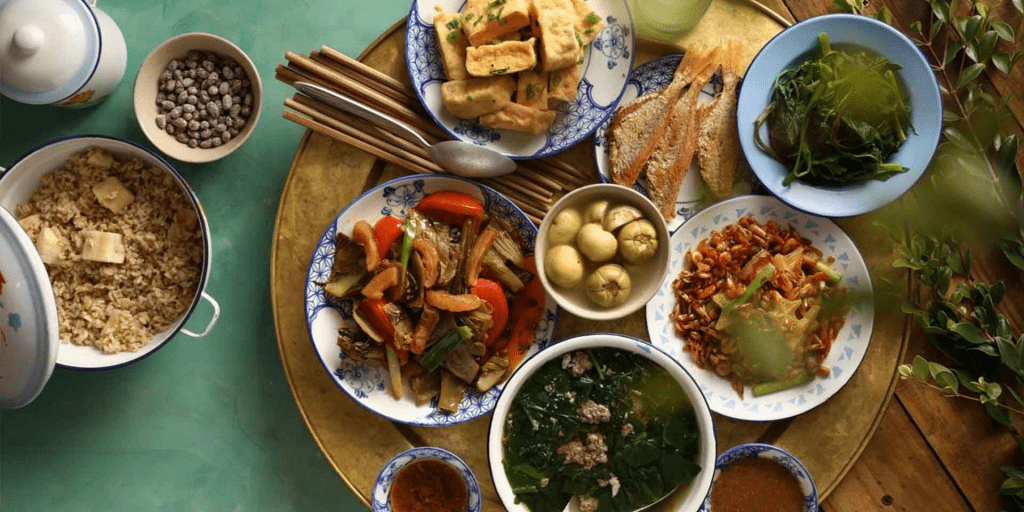
VI. Vegetarian and Vegan Delights
6.1 Buddhist Influence on Vietnamese Vegetarian Cuisine
The Buddhist influence on Vietnamese vegetarian food has had a tremendous impact, moulding it into a distinct and distinctive culinary heritage. In Vietnam, monks and nuns frequently follow strict vegetarian diets, and their proficiency in plant-based cuisine has contributed to the development of a variety of delightful vegetarian foods.
Tofu, seitan, and a variety of mushrooms are common ingredients in these dishes, which are frequently paired with fragrant herbs and spices to produce robust tastes.
Dishes such as “Com Chay” (vegetarian rice) and “Bun Hue Chay” (vegetarian Hue-style noodle soup) highlight the creativity of Vietnamese vegetarian cooking, providing a nourishing and tasty alternative that appeals to both Buddhists and those seeking healthful, meatless choices.
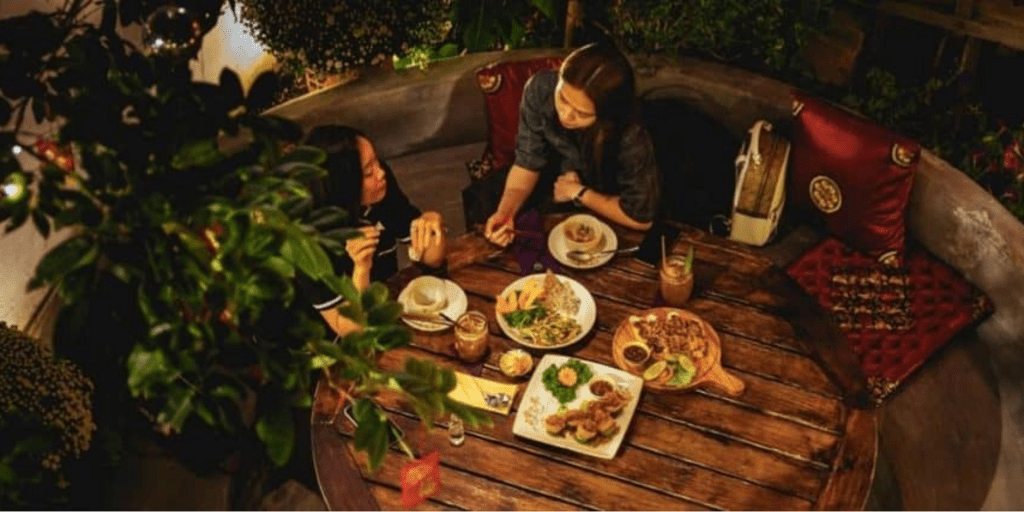
6.2 Tofu, Noodles, and Greens
Tofu, noodles, and greens are the fundamental three in Vietnamese cuisine, renowned for their taste and texture harmony. Tofu, with its mild and creamy flavor profile, is a flexible protein basis that absorbs the rich sauces and marinades with which it is prepared.
Noodles, which are often rice or wheat-based, give a comforting and chewy texture to meals like pho or bun, while a variety of fresh greens, like mint, cilantro, and lettuce, add a crisp bite and brilliant color.
They form the foundation of innumerable Vietnamese cuisines, resulting in a delectable combination of flavors and sensations that exemplifies the country’s culinary expertise.
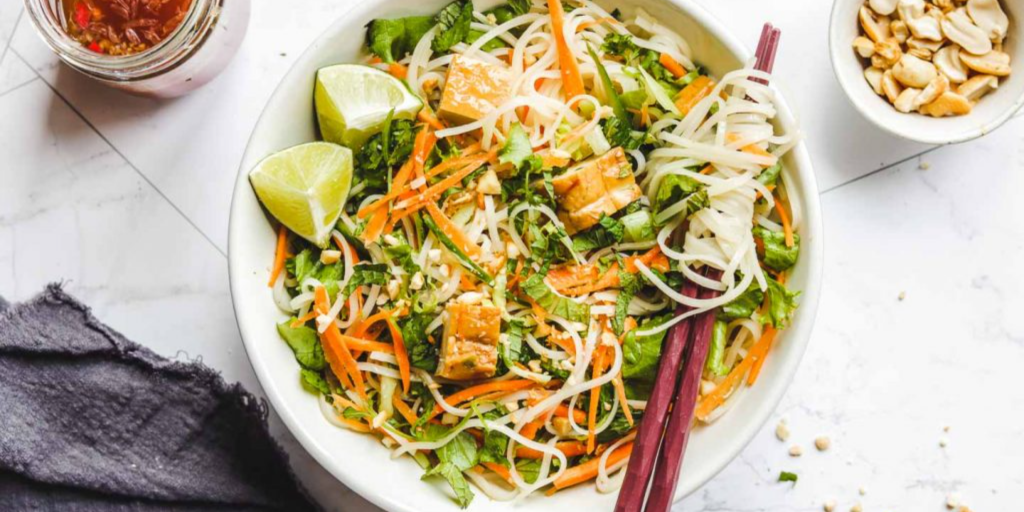
6.3 Vegan-Friendly Restaurants and Dishes
To meet the increased demand for plant-based solutions, Vietnam has seen an increase in vegan-friendly eateries and meals. From major metropolises like Ho Chi Minh City and Hanoi to smaller towns, vegan versions of traditional Vietnamese foods like “Com Chay” (vegetarian rice) and “Pho Chay” (vegan pho noodle soup) are now available.
Chefs are experimenting with tofu, tempeh, and mushrooms in place of meat, while retaining the robust tastes and aromatic spices that distinguish Vietnamese cuisine.
This culinary trend not only caters to the dietary requirements of locals and visitors, but also demonstrates Vietnamese chefs’ versatility and inventiveness in creating tasty vegan alternatives.
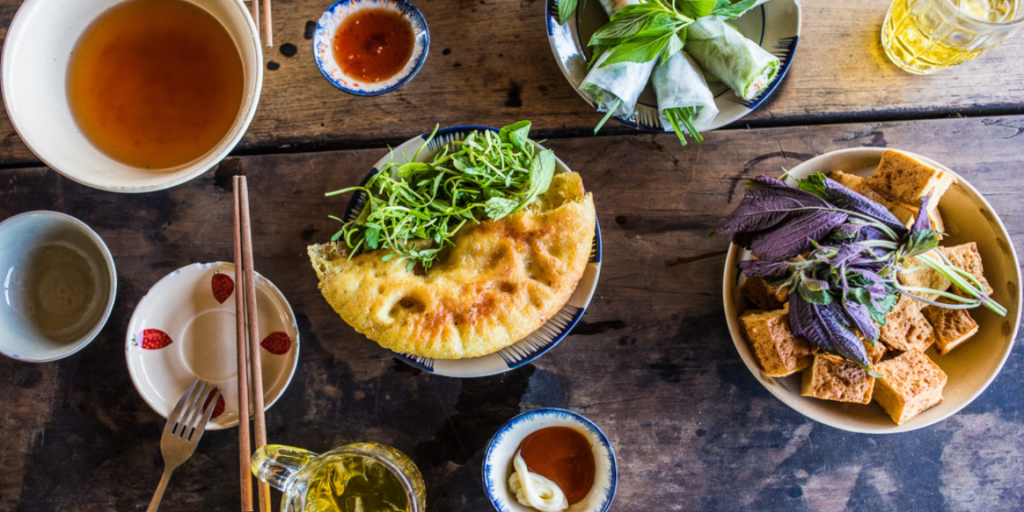
VII. Sweet Endings
7.1 Vietnamese Desserts and Sweets
Vietnamese desserts and sweets are a delicious way to end any meal, presenting a variety of flavors and textures. From the creamy pleasure of “Che” (sweet soup) to the light, refreshing tones of “Banh Flan” (caramel custard), these sweet and savory sweets illustrate the country’s proclivity for combining sweet and savory flavors.
Desserts made with coconut milk, pandan leaves, and mung beans are popular, and street sellers sell a variety of sweet treats such as “Banh Trang Nuong” (grilled rice paper with toppings) and “Kem” (Vietnamese ice cream).
These delicacies satiate the sweet desire while also providing a look into the rich and inventive realm of Vietnamese culinary traditions.
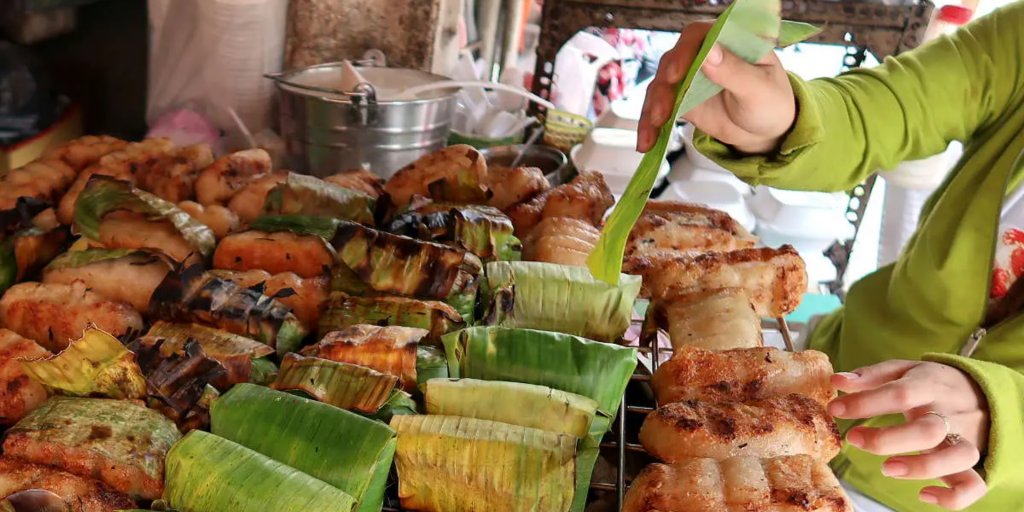
7.2 Coffee Culture: Egg Coffee and More
Vietnam’s coffee culture is well-known for its one-of-a-kind inventions, with egg coffee being a prime example. The powerful tastes of Vietnamese coffee are combined with a beautiful, frothy blend of egg yolks and condensed milk in this rich and delectable beverage.
The result is a creamy, velvety coffee experience that’s both sweet and savory, best drunk slowly in tiny cups. Aside from egg coffee, Vietnam’s coffee culture provides a variety of other creative combinations, such as iced coconut coffee and coffee with yogurt.
These concoctions reflect the country’s love of coffee as well as its talent at mixing local ingredients to create distinctive and enjoyable beverages.
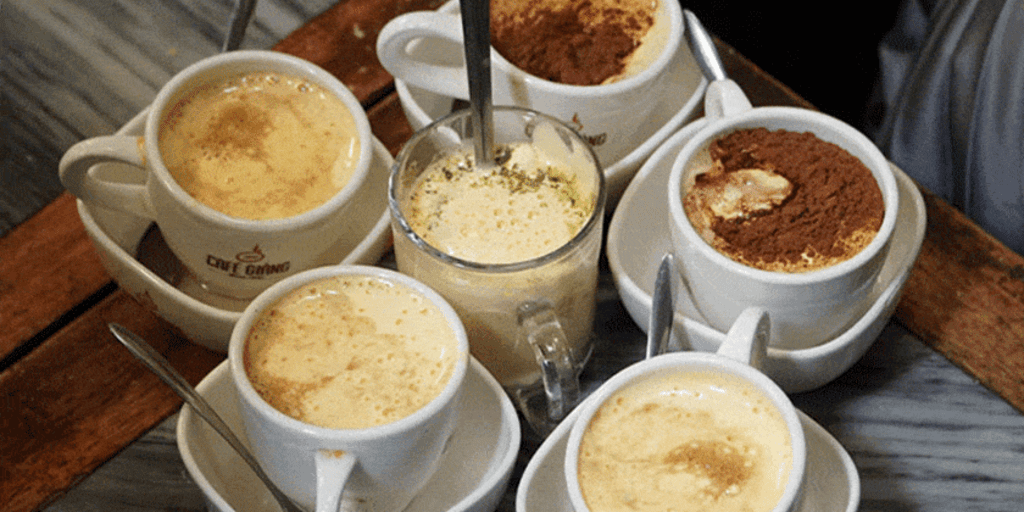
7.3 Satisfying Your Sweet Tooth
In Vietnam, satisfying your sweet craving is a fascinating trip into a world of flavors and sensations. Traditional sweets such as “Che” (sweet soup) provide a wide variety of alternatives, ranging from the invigorating “Che Ba Mau” with its vivid layers of jelly and beans to the cozy “Che Chuoi” with sweet banana and tapioca pearls.
Street sellers provide delectable delights like as “Banh Mi Nuong” (grilled sweet bread) and “Banh Cam” (deep-fried glutinous rice balls filled with sweet mung bean paste). These sweet treats, which are frequently influenced by a combination of local ingredients and French culinary traditions, are the ideal way to end a full lunch in Vietnam.
